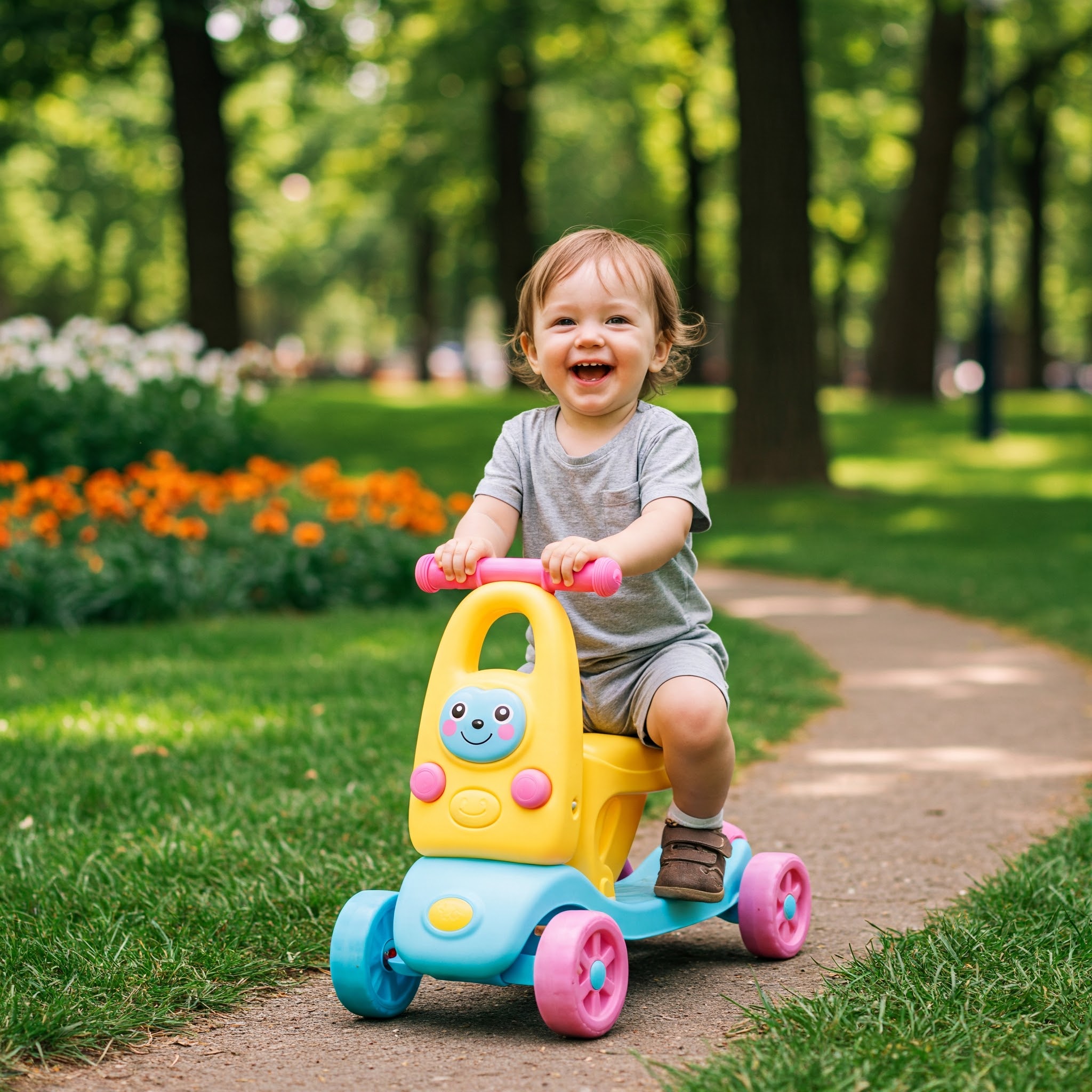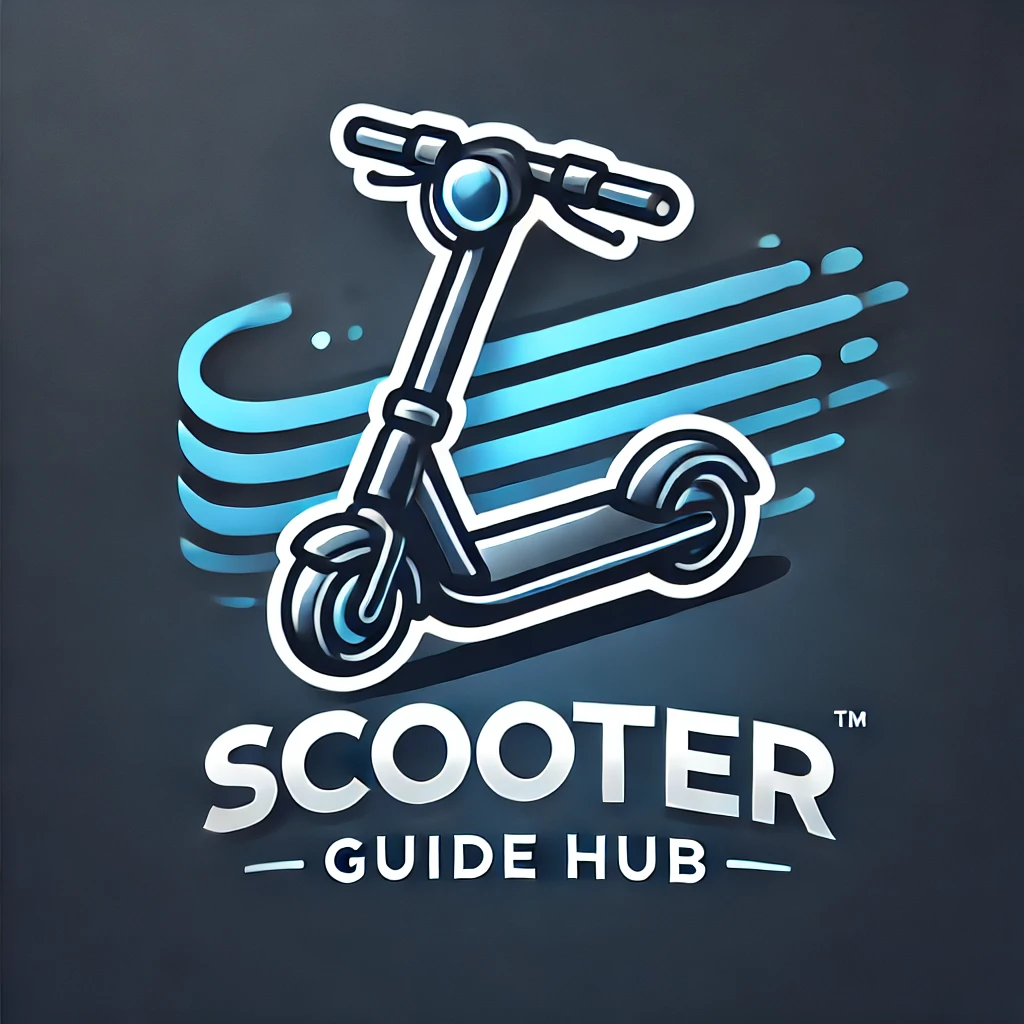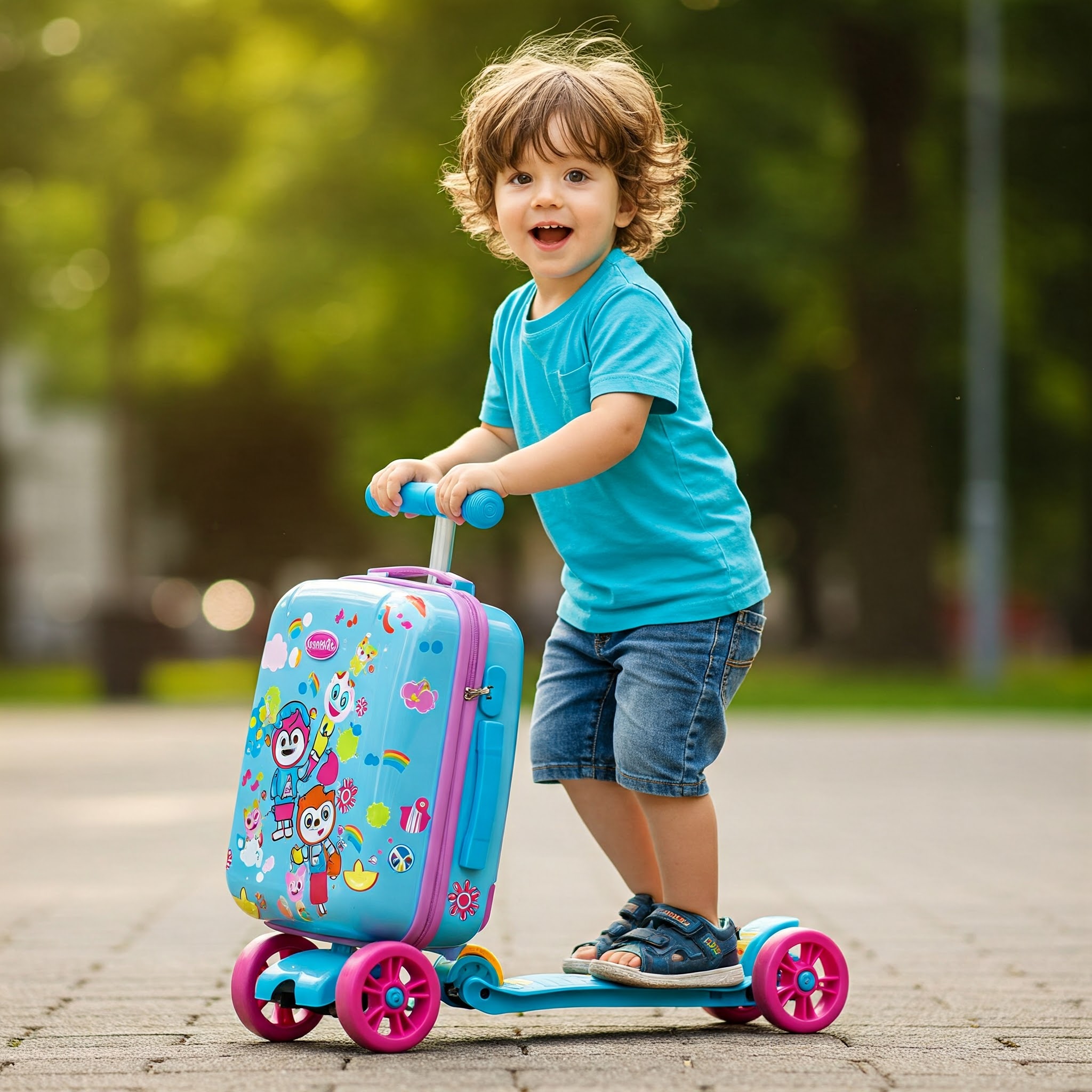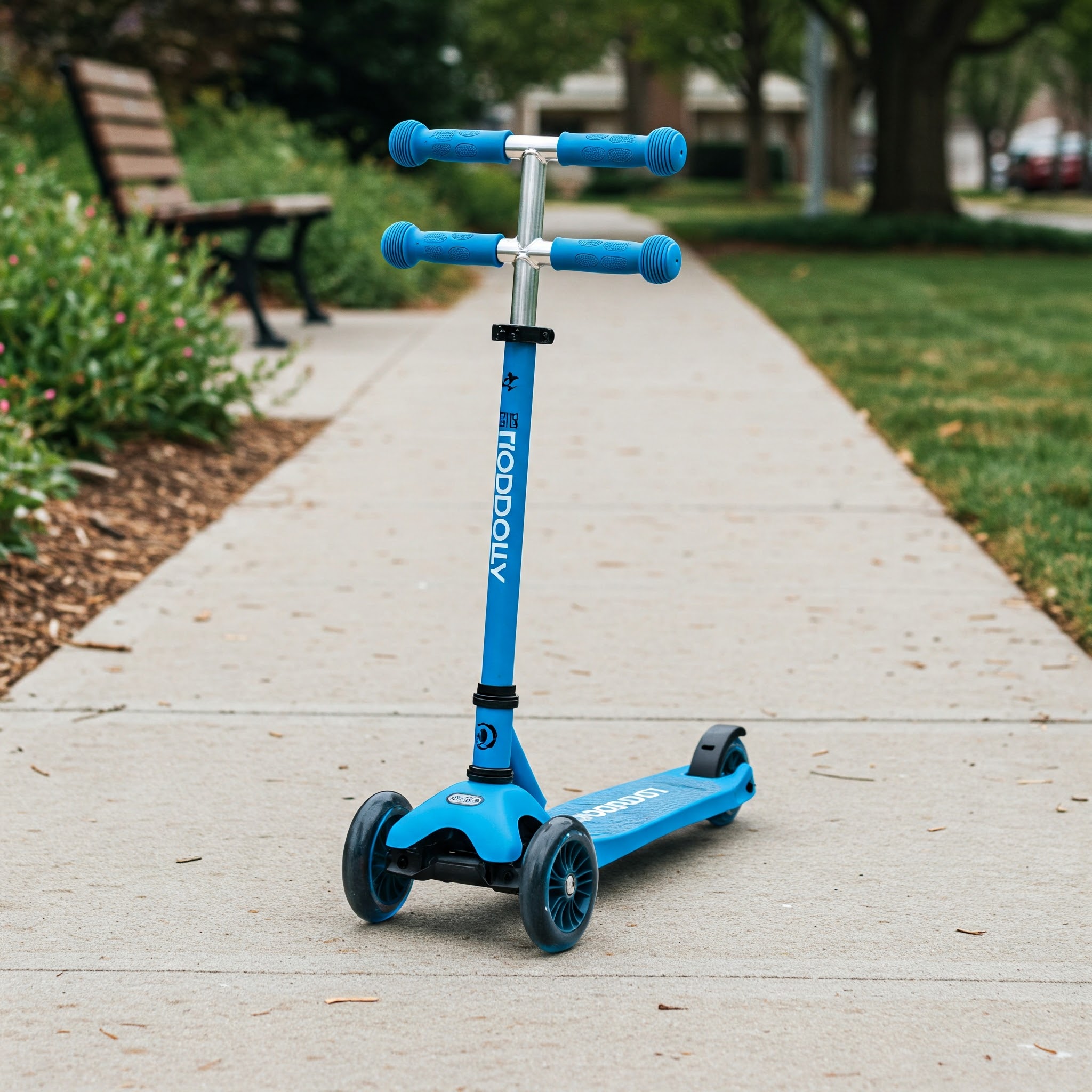Are you watching your little one grow more curious and adventurous by the day? Maybe you’ve noticed how they light up when watching older kids zoom around the neighborhood on their scooters. If you’re considering introducing your toddler to their first set of wheels, you’ve come to the right place! As a parent who’s navigated the exciting (and sometimes overwhelming) world of baby scooter options, I’m thrilled to share everything I’ve learned about these fantastic developmental toys.
Baby scooter models have evolved dramatically in recent years, offering more safety features, better stability, and designs that grow with your child. Whether your little explorer is just learning to walk confidently or already running circles around you, there’s a perfect baby scooter waiting to match their developmental stage and personality.
In this comprehensive guide, we’ll explore everything from the benefits of baby scooters to the top models available today. I’ll also address common concerns parents have and provide practical tips for introducing these fun mobility toys successfully. By the end, you’ll feel confident about finding the perfect baby scooter that will have your little one safely scooting with the biggest smile on their face!
What Exactly Is a Baby Scooter?
A baby scooter is specially designed for the youngest riders, typically ranging from 1 to 5 years old. Unlike traditional scooters made for older children, baby scooters feature wider bases, lower centers of gravity, and typically offer 3 or 4 wheels rather than 2 for enhanced stability.
These introductory scooters are built with safety as the top priority, featuring non-slip decks, secure handlebars, and smooth-rolling wheels that prevent too much speed. Many baby scooter designs now come with convertible features that transform as your child grows – starting as sit-down models for the youngest users and converting to stand-up scooters as balance and confidence improve.
The beauty of a baby scooter is how it introduces fundamental movement skills that benefit development, all while feeling like pure play to your child. It’s no wonder they’ve become such popular gifts for toddlers and preschoolers across the country!
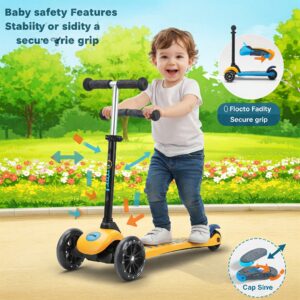
Why Consider a Baby Scooter for Your Child? 🧠
Introducing a baby scooter to your little one offers numerous developmental benefits that go far beyond simply being a fun toy. Here’s why parents and child development specialists often recommend these early mobility tools:
Physical Development Benefits ✅
A baby scooter helps develop crucial gross motor skills as your child learns to balance, steer, and propel themselves forward. Using a scooter engages multiple muscle groups, including:
- Core muscles for balance and stability
- Leg muscles for pushing and propelling
- Arm and shoulder muscles for steering
- Hand muscles for gripping the handlebars
According to research from the American Academy of Pediatrics, activities that promote active movement in early childhood contribute significantly to physical development and help establish healthy exercise habits American Academy of Pediatrics, 2023.
Cognitive Development Benefits 🧠
Riding a baby scooter isn’t just physical – it’s a cognitive workout too! Your child will develop:
- Spatial awareness as they navigate around objects
- Cause and effect understanding as they learn how their movements affect the scooter
- Problem-solving skills when encountering obstacles
- Directional concepts like forward, backward, left, and right
A study published in the Journal of Child Development found that activities requiring balance and coordination can enhance neural connections in developing brains Journal of Child Development, 2022.
Confidence and Independence ⭐
There’s nothing quite like the pride on a toddler’s face when they master a new skill independently! A baby scooter provides:
- Age-appropriate challenges that build self-confidence
- Opportunities for independent play and exploration
- A sense of accomplishment as skills improve
- The thrill of keeping up with older siblings or friends
Social Skills Development 👨👩👧👦
Baby scooters often become catalysts for social interaction:
- Playground connections with other scooter-riding kids
- Learning to take turns and share pathways
- Following simple rules like staying on designated paths
- Mimicking and learning from watching others ride
When Is Your Child Ready for a Baby Scooter?
Every child develops at their own pace, but there are some general guidelines to help you determine if your little one is ready for their first baby scooter:
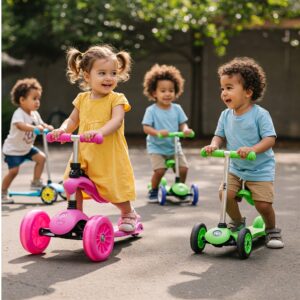
Age Recommendations ⏰
Most baby scooters are designed for children between 1-5 years, though specific age recommendations vary by model:
- 12-18 months: Sit-to-stand convertible models with the widest bases and lowest centers of gravity
- 18-24 months: 3-wheel scooters with sitting options
- 2-3 years: Traditional 3-wheel scooters where children stand
- 3-5 years: More advanced 3-wheel or 2-wheel scooters with adjustable heights
Developmental Milestones to Consider 📊
Rather than focusing solely on age, pay attention to these developmental signs of readiness:
- Can your child walk confidently without assistance?
- Do they demonstrate good balance while standing and moving?
- Can they follow basic safety instructions?
- Do they show interest in ride-on toys or mobility?
- Can they grip handlebars and understand basic steering concepts?
If you answered yes to most of these questions, your little one might be ready to try a baby scooter! Remember that many models grow with your child, starting with sitting positions for those who are still mastering walking and standing balance.
Types of Baby Scooters Available Today
The market offers several distinct types of baby scooters to match different developmental stages and preferences:
3-in-1 Convertible Scooters 🔄
These versatile models offer the most longevity as they transform to match your child’s development:
- Stage 1: Ride-on sitting position for the youngest users (typically 12+ months)
- Stage 2: Supported standing position with handlebar (18+ months)
- Stage 3: Traditional scooter configuration (2+ years)
The advantage of these models is their ability to grow with your child over several years, making them excellent value for money. Furthermore, the familiar base helps children transition confidently between stages.
Sit-Down Baby Scooters 💺
Designed for the youngest riders (usually 12-24 months), these models feature:
- A seat for stability and comfort
- Lower center of gravity for safety
- Foot propulsion to develop leg strength
- Wide, sturdy bases to prevent tipping
These make excellent “first scooters” for toddlers who are confident walkers but not quite ready for standing scooter models.
3-Wheel Stand-Up Baby Scooters 🛴
The classic toddler scooter configuration includes:
- Two wheels in front, one in back (or vice versa) for enhanced stability
- Lower deck height for easy mounting and dismounting
- Wider deck space for little feet
- Non-slip foot surfaces
- Child-sized handlebars with soft grips
These models are typically recommended for ages 2-5 and offer a good balance of stability and maneuverability.
4-Wheel Baby Scooters 🛴
Offering maximum stability for beginners, four-wheel models feature:
- Two wheels in front, two in back
- Extremely stable design that resists tipping
- Often wider decks for easier foot placement
- Great for children who need more balance support
Light-Up Baby Scooters ✨
Adding an element of fun and visibility, many baby scooters now feature:
- LED light-up wheels that illuminate when in motion
- No batteries required (kinetic power)
- Enhanced visibility for safety in lower light conditions
- Extra sensory engagement for young riders
Top Baby Scooter Recommendations for 2025
After researching dozens of options and collecting feedback from parents, here are some of the standout baby scooter models available on the market today:

Best Overall 3-in-1 Convertible: Radio Flyer Scoot 2 Scooter Ride On
This incredibly versatile model has won the hearts of parents and toddlers alike with its smooth transition from ride-on to scooter. Perfect for little ones from 1-4 years, this sturdy model features:
- Easy conversion between sitting and standing modes
- Adjustable handlebars that grow with your child
- Extremely stable three-wheel design
- Lightweight frame for easy parent carrying when needed
- Storage compartment under the seat
- Durable construction that withstands typical toddler use
Parents rave about how this model has lasted through multiple children, making it an excellent investment for families planning to have more than one child.
Best for Youngest Riders: Fisher-Price Roller Blocks Scooter
For the littlest adventurers just mastering walking, the Fisher-Price Roller Blocks Scooter offers:
- Super-wide deck for stability
- Extra-low height to the ground
- Chunky, easy-grip handlebars
- Interactive play elements to engage young children
- Gentle learning curve for first-time riders
- Suitable for children as young as 12 months
Best Balance Development: Micro Mini 3-in-1 Deluxe Kick Scooter
Swiss-designed and built to last, the Micro Mini 3-in-1 is known for its exceptional quality and thoughtful engineering:
- Award-winning Swiss design
- Converts from sitting scooter to standing scooter
- “Lean-to-steer” technology that develops balance intuitively
- Smooth-gliding wheels that work well on multiple surfaces
- Adjustable heights to grow with your child
- Available in multiple vibrant colors
- Lightweight yet incredibly durable construction
Best for Active Toddlers: Razor Jr. Lil’ Kick Scooter
From the trusted name in scooters comes their toddler-friendly model:
- Lightweight design (only 6 pounds)
- Three-wheel stability
- Wide, slip-resistant deck
- Impact-absorbing front wheels
- Sturdy steel frame
- Simple assembly
- Recommended for ages 3+
Most Budget-Friendly: Jetson Jupiter Kick Scooter
For families watching their budget, the Jetson Jupiter offers excellent value:
- Light-up wheels that thrill young riders
- Three-wheel design for stability
- Adjustable handlebars
- Rear brake for safety
- Affordable price point without sacrificing safety
- Kid-friendly designs and colors
Best for Indoor/Outdoor Use: Skidee Y100 Folding Three Wheel Scooter
This versatile model transitions smoothly between indoor and outdoor environments:
- Silent, smooth-rolling wheels safe for indoor floors
- Lightweight, collapsible design for easy storage
- Adjustable height handlebars
- Available in multiple bright colors
- Light-up wheels for added fun
Comparative Analysis of Top Baby Scooter Models
| Model | Age Range | Convertible | Weight Limit | Special Features | Price Range |
|---|---|---|---|---|---|
| Radio Flyer Scoot 2 Scooter Ride On | 1-4 years | Yes (3-in-1) | 50 lbs | Storage compartment, adjustable handlebars | $$-$$$ |
| Fisher-Price Roller Blocks Scooter | 12-36 months | No | 45 lbs | Interactive play elements, extra-wide deck | $-$$ |
| Micro Mini 3-in-1 Deluxe | 1-5 years | Yes (3-in-1) | 75 lbs | Swiss design, lean-to-steer technology | $$$-$$$$ |
| Razor Jr. Lil’ Kick | 3+ years | No | 45 lbs | Lightweight, slip-resistant deck | $-$$ |
| Jetson Jupiter | 2-5 years | No | 55 lbs | Light-up wheels, rear brake | $ |
| Skidee Y100 | 2-8 years | Yes | 80 lbs | Foldable, indoor-safe wheels | $$-$$$ |
💬 Just one click – help others make better buying decisions too!😊
🛍️ Ready to Find Your Child’s Perfect Baby Scooter? Don’t Miss These Deals! 🛒
–> Finding the right baby scooter can transform your little one’s playtime while building essential developmental skills! Click on any highlighted product above to check current pricing and availability on Amazon. These carefully vetted models offer the perfect blend of safety, durability, and fun that both parents and toddlers will love! 🛴✨
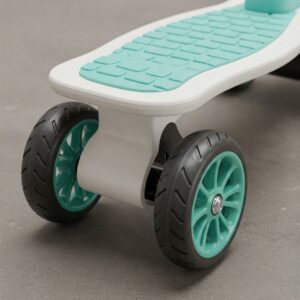
Key Safety Features to Look For in Baby Scooters
When shopping for a baby scooter, prioritize these safety features:
- Stability: Look for models with wider bases and multiple wheels for better balance
- Non-slip decks: Textured surfaces help prevent little feet from slipping
- Steering limiters: Features that prevent over-steering and potential tipping
- Durable construction: Quality materials that can withstand falls and accidents
- Appropriate weight limits: Ensure the scooter is rated for your child’s size
- Adjustable handlebars: Allow for proper ergonomic positioning as your child grows
- Braking systems: Simple braking mechanisms for older toddlers learning to control speed
How to Choose the Right Baby Scooter for Your Child
Finding the perfect baby scooter means considering several important factors:
Your Child’s Age and Development Level 👶
- For early walkers (12-18 months): Prioritize sit-down models with the lowest centers of gravity
- For confident toddlers (18-24 months): Consider convertible models that offer both sitting and standing options
- For preschoolers (2-5 years): Traditional 3-wheel scooters with appropriate height adjustments
Physical Considerations 📏
- Height: Can your child comfortably reach the handlebars?
- Weight: Is your child within the recommended weight limit?
- Strength: Can they manage the weight and maneuverability of the model?
- Coordination: Does the steering mechanism match their current coordination abilities?
Where They’ll Ride 🏞️
- Primarily indoors: Look for models with quiet, floor-safe wheels and compact designs
- Mostly outdoors on smooth surfaces: Standard models work well
- Mixed terrain: Consider models with larger, softer wheels that handle slight irregularities
- Traveling often: Foldable models offer convenient portability
Growth Potential 📈
- Single-stage models: Less expensive but may be outgrown quickly
- Convertible/adjustable models: Higher initial cost but better long-term value
- Hand-me-down potential: Higher quality models may serve multiple children in the family
Your Budget 💰
Baby scooters range widely in price, generally falling into these brackets:
- Budget-friendly ($25-$40): Basic models with standard features
- Mid-range ($40-$80): Better quality construction, additional features
- Premium ($80-$150): Convertible models, highest quality materials, longest lifespan
Child’s Interest and Personality 🌈
- Cautious children: Models with the greatest stability and familiar characters
- Adventure-seekers: Models that offer more growing room and “cool factor”
- Visually motivated: Light-up features or favorite colors/characters
- Sensory-sensitive: Simpler designs without overwhelming features
How to Introduce Your Child to Their New Baby Scooter
Setting your little one up for scooter success requires a thoughtful approach:
First Impressions Matter 🌟
- Let them explore the scooter at their own pace
- Demonstrate basic usage without pressuring participation
- Start in a familiar, comfortable environment
- Make the first experience positive and pressure-free
- Celebrate interest and small attempts, not just successful riding
Start with the Basics 🏁
For sit-down models:
- Help them understand how to sit properly
- Show them how to use their feet to move forward
- Practice straight-line movement before introducing turning
For stand-up models:
- Begin with simply standing on the deck while you hold the scooter steady
- Practice balance with both feet on the deck
- Introduce small pushes while you support the handlebars
- Gradually reduce your assistance as confidence builds
Safety First Approach 🦺
- Always insist on properly fitted helmets
- Consider knee and elbow pads for beginners
- Choose flat, smooth, traffic-free areas for practice
- Establish clear boundaries for where riding is permitted
- Teach basic “rules of the road” even to the youngest riders
Make It Fun! 🎮
- Set up simple obstacle courses with safe items to navigate around
- Create “parking spots” or destinations to practice stopping
- Use sidewalk chalk to create fun paths to follow
- Organize playgroup “scooter days” for social motivation
- Take photos and videos to show their progress
Consistent Practice 📆
- Schedule regular, short practice sessions
- End each session before frustration sets in
- Gradually increase distance and complexity
- Celebrate improvements, no matter how small
- Be patient – some children take to scooters immediately while others need more time
Safety Gear and Accessories for Baby Scooter Riders
Protecting your little one while they learn to scoot is paramount:
Essential Safety Gear ⛑️
- Helmets: Non-negotiable for all wheeled activities; look for toddler-specific models that properly fit smaller heads
- Knee and elbow pads: Provide protection for inevitable falls and build confidence
- Wrist guards: Optional but helpful for preventing scrapes during falls
- Closed-toe shoes: Always required for safe scooting (no sandals or bare feet)
According to the Consumer Product Safety Commission, properly fitted helmets can reduce the risk of head injuries by up to 85% Consumer Product Safety Commission, 2023.
Helpful Accessories 🎒
- Parent handle extensions: Allow you to help guide without bending over
- Bell or horn: Adds fun while teaching awareness of others
- Storage bag or basket: Perfect for carrying small treasures or snacks
- Personalized name plates or stickers: Create ownership and excitement
- Weather protection: Consider handlebar mittens for colder climates
Maintenance Essentials 🔧
- Wheel lubricant: Keeps wheels spinning smoothly
- Cleaning supplies: Baby-safe wipes for keeping the scooter clean
- Small toolkit: For occasional tightening of parts
- Replacement parts kit: Particularly important for higher-end models
Where to Ride: Best Environments for Baby Scooters
Setting up your child for scooting success means choosing appropriate riding environments:
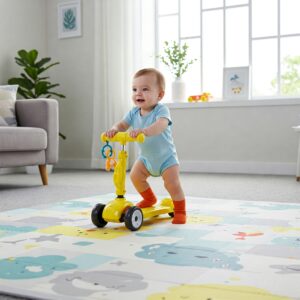
Indoor Options for Beginners 🏠
- Empty hallways with non-slip flooring
- Cleared living spaces with furniture moved aside
- Finished basements with smooth concrete
- Indoor play gyms during less crowded times
- Community centers with open gym time
Outdoor Beginner-Friendly Locations 🌳
- Empty basketball or tennis courts
- Smooth, flat driveways (away from street access)
- Quiet cul-de-sacs with minimal traffic
- Empty parking lots during off-hours
- Paved park paths during less busy times
Intermediate Riding Locations 🏞️
- Dedicated skate parks with toddler areas
- Paved bike trails with minimal inclines
- School playgrounds during non-school hours
- Paved walking tracks at recreation centers
- Boardwalks (during less crowded times)
Safety Considerations for All Locations ⚠️
- Always supervise young riders
- Check surfaces for hazards like rocks, sticks, or uneven pavement
- Be mindful of pedestrians and other wheeled users
- Avoid areas with vehicle traffic
- Consider sun exposure and provide appropriate protection
Common Challenges and Solutions When Introducing Baby Scooters
Even with the perfect baby scooter, you might encounter some hurdles:
Challenge: Reluctance or Fear 😟
Many children initially show hesitation about trying something new and potentially intimidating.
Solutions:
- Allow them to watch other children (or you!) demonstrate scooting
- Start with very short sessions focused on exploration rather than riding
- Consider a favorite stuffed animal as a “passenger” who needs a ride
- Use positive reinforcement and celebrate even the smallest attempts
- Never force participation – this creates negative associations
Challenge: Balance Difficulties ⚖️
Some children struggle more with balance than others, making scooting frustrating.
Solutions:
- Start with models that offer sitting positions or the most stable configurations
- Practice static balance exercises separately from scooting
- Provide more physical support initially, gradually reducing your assistance
- Consider placing colorful targets to focus on while balancing
- Practice on carpet or grass where falls are less intimidating
Challenge: Steering Confusion 🔄
Understanding how to turn and control direction can be conceptually difficult for very young children.
Solutions:
- Use visual markers like cones to create simple paths
- Practice “follow the leader” games where they mimic your movements
- Use simple directional language consistently (“turn toward the tree”)
- Place favorite toys as “destinations” to motivate directional movement
- Consider models with simpler steering mechanisms initially
Challenge: Strength and Endurance Limitations 💪
Little legs tire quickly, especially when learning a new skill.
Solutions:
- Keep initial sessions very short (5-10 minutes maximum)
- Incorporate rest stops into your practice routes
- Alternate between active scooting and coasting
- Build strength through complementary activities like climbing and jumping
- Create “parking spots” where they can take breaks
Challenge: Motivation and Interest Fluctuations 🎯
Young children’s interests change rapidly, sometimes leading to abandoned activities.
Solutions:
- Integrate scooting into regular routines rather than making it a special event
- Create themed “scooter adventures” that incorporate storytelling
- Invite friends for social motivation
- Set up simple “obstacle courses” that add novelty
- Take breaks from structured practice but keep the scooter accessible
Advanced Skills and Progression for Growing Scooter Riders
As your child gains confidence on their baby scooter, you can help them develop more advanced skills:
Skill Progression Path 📈
- Basic Movement: Sitting and pushing or standing and gliding in straight lines
- Controlled Stopping: Using feet or brakes to stop safely at designated points
- Basic Turning: Making wide, gentle turns while maintaining balance
- Speed Management: Controlling pace on flat surfaces
- Simple Obstacles: Navigating around stationary objects
- Tighter Turns: Reducing turning radius while maintaining control
- Uneven Surfaces: Managing slight changes in terrain
- Minor Inclines: Safely ascending and descending gentle slopes
- Advanced Stopping: Quick, controlled stops from various speeds
- Transitioning: For older children, preparing for two-wheel scooters
Fun Skill-Building Activities 🎮
- Follow the Line: Create chalk paths of increasing complexity
- Slow Race: Practice control by seeing who can go the slowest without putting feet down
- Obstacle Courses: Set up safe obstacles to navigate around
- Scooter Limbo: Practice control while going under a pool noodle held horizontally
- Target Practice: Place hoops or targets to scoot through
- Simon Says Scooting: Combine commands with scooter actions
- Red Light, Green Light: Practice stopping and starting quickly
- Scooter Relay Races: Team activities for multiple children
When to Upgrade Their Scooter 🆙
Signs your child may be ready for a more advanced model:
- They’ve reached the upper weight limit of their current scooter
- They’ve mastered all the skills their current model allows
- The height adjustment no longer accommodates their growth
- They show interest in more advanced scooter styles
- They consistently use their current scooter at its fullest capability
Transitioning to “Big Kid” Scooters 🚦
The typical progression after outgrowing a baby scooter:
- 3-wheel scooter with lean-to-steer technology (ages 3-7)
- 2-wheel scooter with wider deck (ages 5-8)
- Standard 2-wheel kick scooter (ages 7+)
- Specialized scooters for specific interests (e.g., stunt, commuting)
Maintaining Interest Through the Years 📅
- Periodically refresh accessories and safety gear with age-appropriate designs
- Find local scooter meetups or groups for social motivation
- Explore new locations as skills advance
- Document progress through photos and videos to show growth
- Consider family scooting activities where everyone participates
Seasonal and Special Occasion Baby Scooter Activities
Keep scooting fresh and exciting throughout the year:
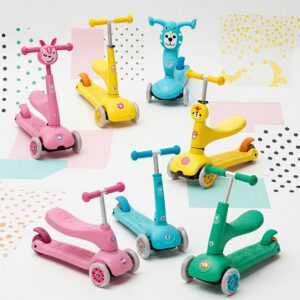
Seasonal Scooter Fun 🌦️
Spring:
- Puddle navigation challenges (with appropriate rain gear)
- Flower-spotting scooter adventures
- Bird-watching scooter safaris
- Spring cleanup “helper” activities with basket accessories
Summer:
- Water play with washable chalk and spray bottles
- Dawn/dusk rides to beat the heat
- Beach boardwalk adventures (where permitted)
- Parade participation with decorated scooters
Fall:
- Leaf-pile scooter courses
- Apple orchard smooth pathways (during less crowded times)
- Halloween costume parades on scooters
- Fall nature scavenger hunts
Winter:
- Indoor scooter playdays
- Shopping mall early-morning rides (where permitted)
- Winter wonderland decorations for scooters
- Indoor scooter movie nights (riding while watching)
Special Occasion Ideas 🎉
- Birthday Parties: Scooter-themed celebrations with decorating stations
- Holidays: Themed scooter decorations for Christmas, Easter, etc.
- Family Gatherings: Cousin scooter parades
- Community Events: Participation in child-friendly charity walks/runs
- Playdates: Organized scooter skills challenges with friends
Creating Lasting Memories 📸
- Document their scooter journey with regular photos at the same location
- Create a “scooter growth chart” showing progress in skills and size
- Keep a simple scrapbook of scooter adventures and milestones
- Record video messages from different ages to their “future selves”
- Save their first baby scooter as a keepsake if space allows
Maintenance and Care Tips for Baby Scooters
Proper maintenance ensures safety and extends the life of your investment:
Regular Safety Checks ✅
Establish a routine of checking these elements before each ride:
- Handlebar tightness and security
- Wheel movement (smooth and unobstructed)
- Brake functionality (if applicable)
- Overall structural integrity
- Deck surface condition (no cracks or sharp edges)
Cleaning Guidelines 🧼
- Wipe down with mild soap and water after muddy or sandy adventures
- Avoid harsh chemicals that could degrade plastic components
- Dry thoroughly, especially around moving parts
- Use baby-safe disinfectant wipes for handlebar grips
- Remove debris from wheel mechanisms regularly
Storage Best Practices 🏠
- Store upright when possible to prevent warping
- Keep in temperature-controlled environments (extreme heat can damage plastic components)
- Avoid prolonged direct sunlight when not in use
- Consider a designated “parking spot” that teaches responsibility
- For extended storage, loosen adjustable parts to reduce strain
Common Repair Issues and Solutions 🔧
- Sticky wheels: Clean and apply appropriate lubricant
- Loose handlebars: Tighten according to manufacturer specifications
- Worn grips: Replace with manufacturer parts or universal options
- Deck scuffing: Light sanding and baby-safe paint for severe cosmetic damage
- Lost hardware: Contact manufacturer for exact replacements or visit hardware stores with the original parts
Frequently Asked Questions About Baby Scooters
Safety Concerns
Q: Are baby scooters safe for toddlers? A: Yes, when chosen appropriately for your child’s developmental stage and used with proper safety gear and supervision. Models designed specifically for young children feature enhanced stability, limited speed capability, and child-friendly ergonomics.
Q: Is a helmet really necessary for such a small scooter? A: Absolutely. Head protection is essential for all wheeled activities regardless of speed or size. Early helmet use also establishes crucial safety habits that will serve them throughout childhood.
Q: What surfaces are safest for beginning riders? A: Smooth, flat surfaces free of obstacles, debris, and traffic are ideal. Indoor floors, basketball courts, tennis courts, and smooth driveways are excellent starting points.
Development Questions
Q: Will a scooter help my child develop balance? A: Yes! Scooters are excellent tools for developing dynamic balance, coordination, and spatial awareness. The skills learned transfer to many other physical activities.
Q: My child seems afraid of the scooter. Should I push them to try it? A: Never force participation. Instead, model enjoyment, offer plenty of support, start with very brief, positive exposures, and respect their timeline. Many initially hesitant children become enthusiastic riders when allowed to proceed at their comfort level.
Q: How long does it typically take for a toddler to learn to use a scooter? A: This varies dramatically by child. Some take to it immediately, while others need several weeks of short practice sessions. Consistency, positive reinforcement, and patience are key.
Practical Considerations
Q: How long will my child use a baby scooter before outgrowing it? A: Depending on the model and your child’s growth, most children use their first scooter for 1-3 years. Convertible models with adjustable features typically offer the longest useful lifespan.
Q: Are expensive models worth the investment? A: Higher-priced models generally offer better durability, growth features, smoother operation, and higher weight limits. For families with multiple children who will use the scooter or those planning to resell, premium models often provide better long-term value despite the higher initial cost.
Q: Can baby scooters be used indoors? A: Many models work well indoors on hard floors. Look for models with non-marking wheels, quieter operation, and appropriate sizing for your indoor spaces.
🛍️ Transform Playtime Today With These Top-Rated Baby Scooters! 🌈
–> Give your child the gift of movement, confidence, and fun! These carefully selected baby scooters combine safety, durability, and developmental benefits that will grow with your child. Click any highlighted product to check current prices and availability – your little one’s favorite new adventure awaits! 🛴💫
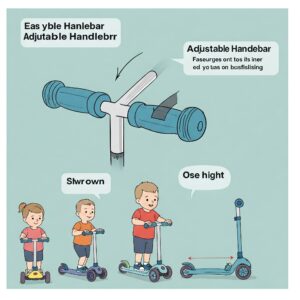
Conclusion: Embracing the Baby Scooter Journey
Introducing your child to a baby scooter opens up a world of developmental benefits wrapped in layers of fun and excitement. From those tentative first scoots to confident cruising around the neighborhood, this journey represents significant milestones in your child’s physical and cognitive development.
Remember that like any skill, learning to ride a scooter follows a unique timeline for each child. The key ingredients for success include choosing the right model for your child’s current abilities, maintaining a consistent practice schedule, prioritizing safety, and above all, keeping the experience positive and pressure-free.
As your little one builds confidence on their baby scooter, you’re not just giving them a fun toy – you’re helping develop crucial life skills like persistence, risk assessment, balance, and coordination. You’re also establishing healthy habits of outdoor activity and independent play that can serve them throughout childhood and beyond.
Whether you choose a convertible model that grows from sitting to standing, a stable three-wheeler for confident toddlers, or a light-up scooter that adds sensory excitement, the right baby scooter becomes more than just a toy – it becomes a trusted companion for countless adventures.
So grab those helmets, find a smooth patch of pavement, and watch your little one’s face light up with the unique joy and pride that comes from mastering a new skill. The baby scooter journey awaits!
More FAQ
❓ What age is suitable for a baby scooter?
✅ Most baby scooters are designed for kids aged 1 to 3 years, offering a stable base and low deck height to support early balance and coordination…
❓ Are baby scooters safe for toddlers?
✅ Yes, baby scooters are built with safety features like wide wheels, non-slip decks, and stable steering systems to support toddlers as they ride…
❓ Which is better: 3-wheel or 2-wheel baby scooter?
✅ A 3-wheel baby scooter is better for beginners, offering extra balance and stability, while 2-wheel models suit older toddlers with improved coordination…
❓ Can a baby scooter be used indoors?
✅ Many baby scooters are lightweight and feature rubber wheels, making them suitable for indoor use on smooth floors without damaging surfaces…
❓ What features should I look for in a baby scooter?
✅ Key features include adjustable handlebars, non-slip deck, rear brake, and sturdy materials that support your child’s safety and growth stages…
Recommended for You:
- 7 Best Solite Scooter Models for Urban Commuting in 2025
- 10 Best Paw Patrol Scooter Options For Young Adventure Seekers in 2025
- Micro Maxi Scooter: 7 Incredible Benefits for Kids in 2025
Disclaimer: This article contains affiliate links. If you purchase products through these links, we may earn a small commission at no additional cost to you.
✨ Found this helpful? Share it with your friends! 💬🤗
